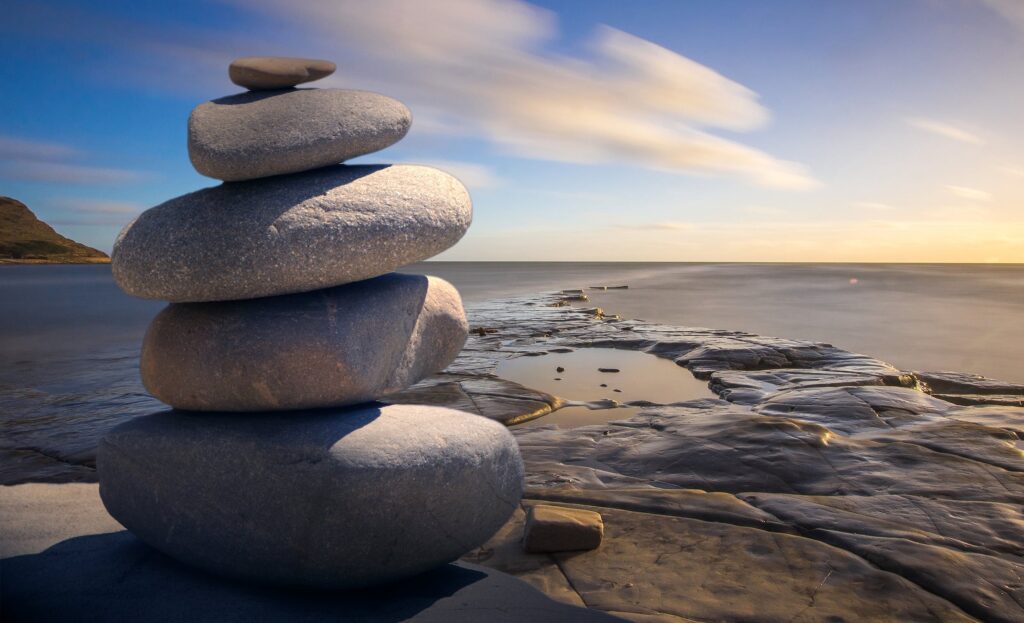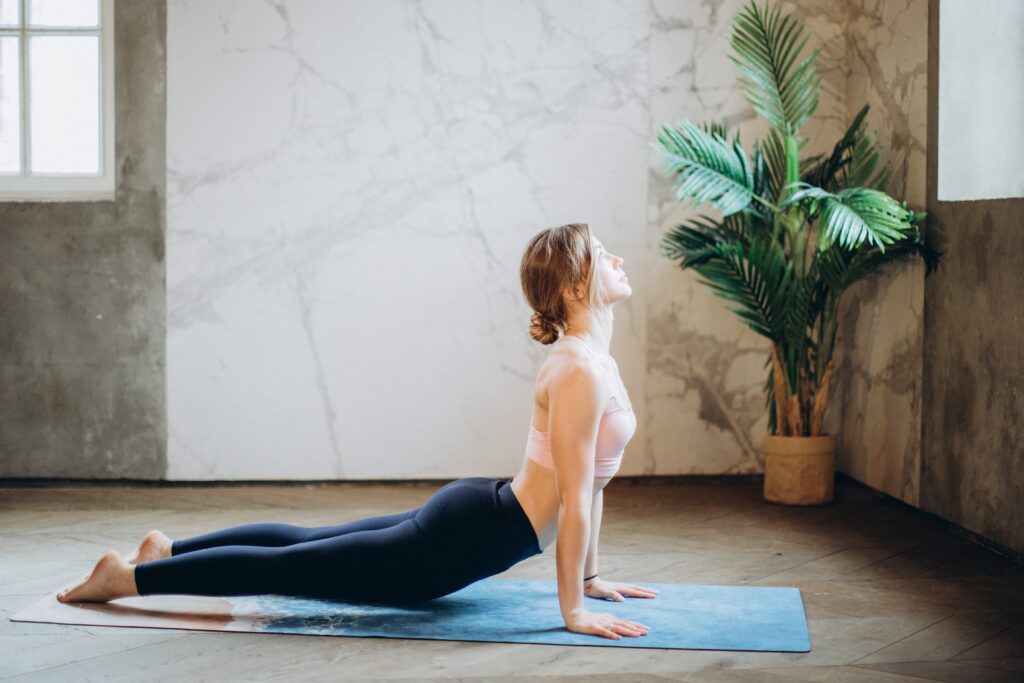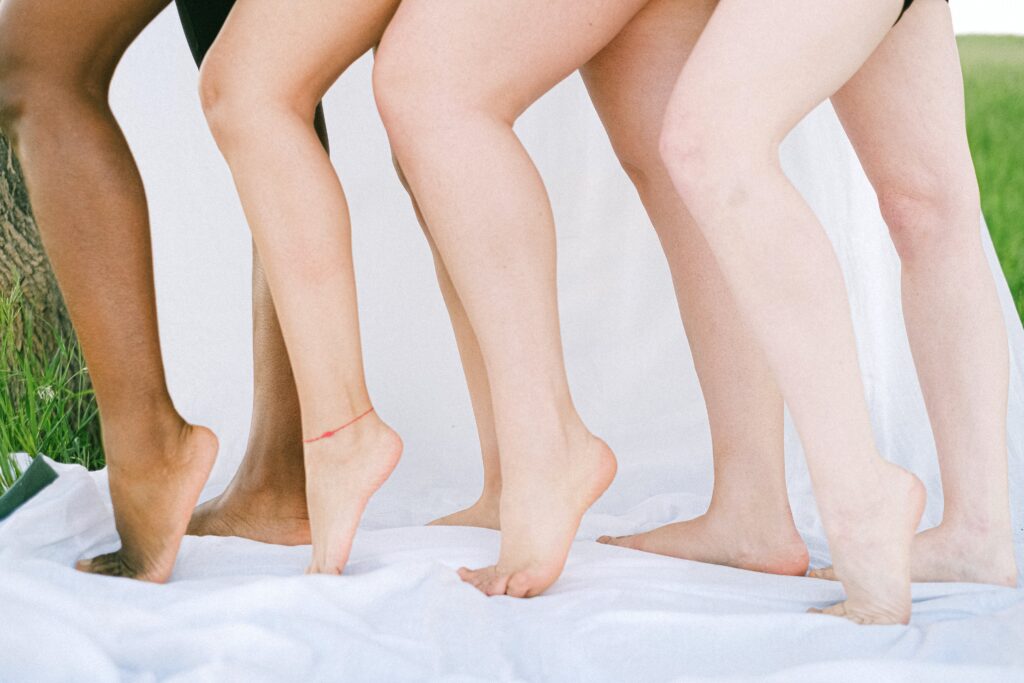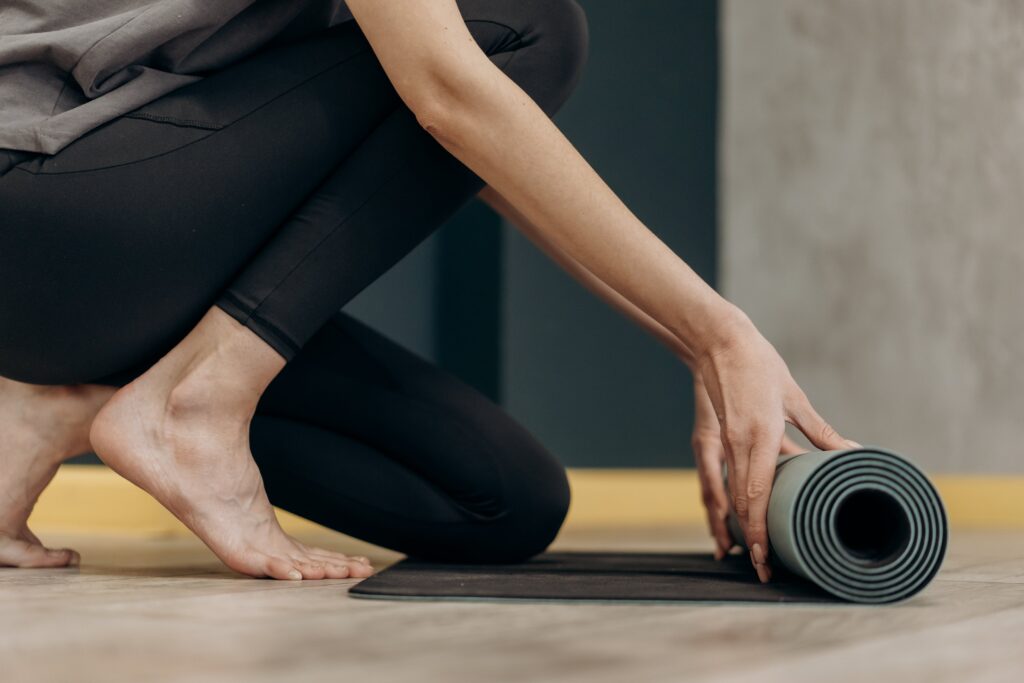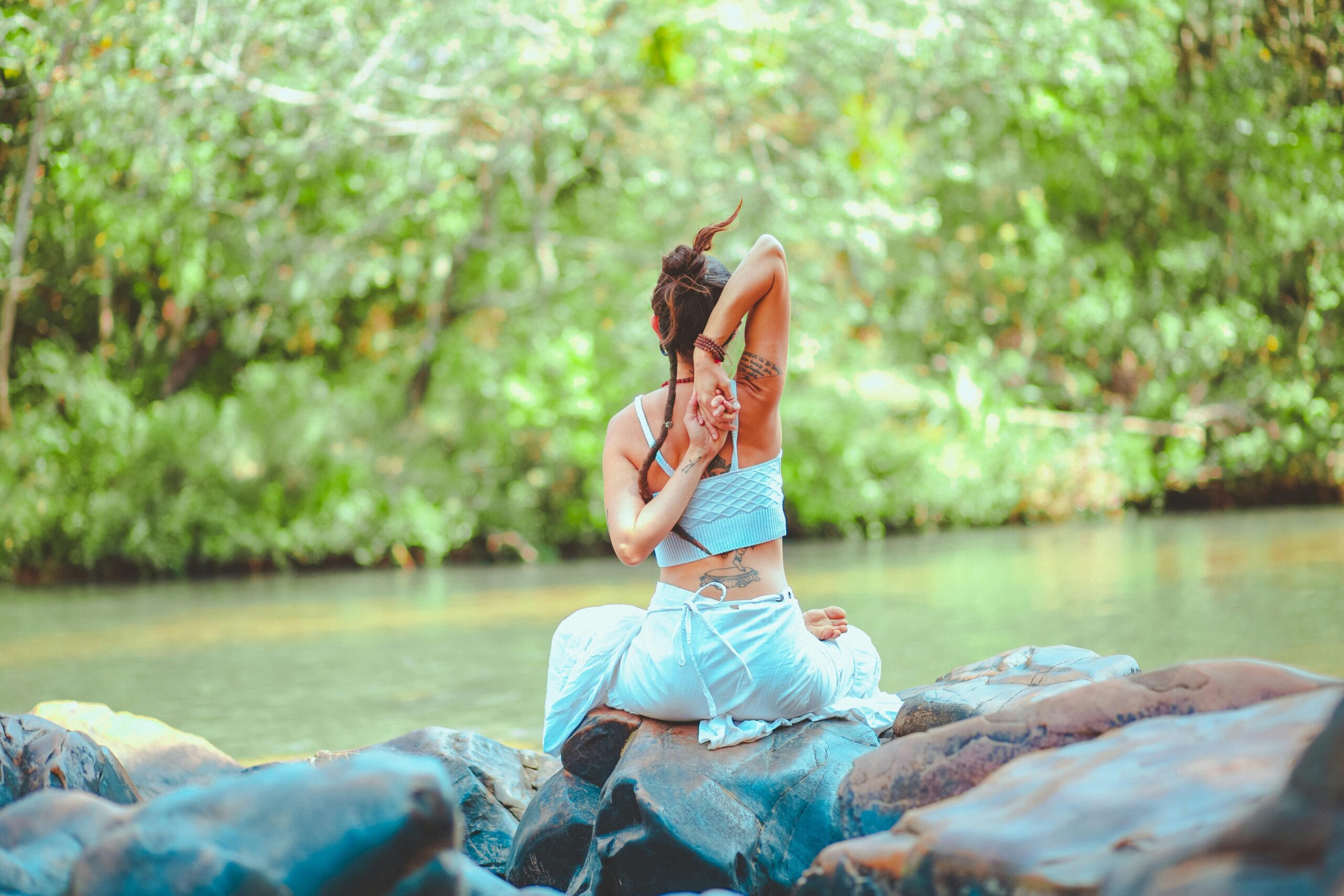
Asteya, The Third Yama
Non-Stealing in Yoga and Life
Asteya is the third Yama. The Yamas are one of the 8 limbs of yoga. Asteya translates to non-stealing. It’s the practice of non-stealing things physically BUT like all the Yamas and Niyamas, it’s also so much more than that. It includes taking thoughts, opinions, energy, knowledge and time and extnds to not only others, but also yourself.
Asteya teaches us a philosophy of respectful living that cultivates abundance and gratitude. By respecting what belongs to others, both material and intangible, we open ourselves to a world of fulfillment.
This respect translates into appreciating what we already have. Asteya encourages us to be mindful consumers, avoiding the urge to take what isn’t ours or isn’t truly needed. It nudges us away from comparing ourselves to others and instead celebrate our unique journey. By letting go of feelings of lack, we create space for gratitude to blossom.
With a grateful heart, we begin to see the abundance that surrounds us. It’s not just about material possessions, but also about the richness of experiences, relationships, and even our own health. Asteya fosters a sense of contentment, allowing us to appreciate the present moment and all the gifts it holds. This creates a positive cycle – gratitude attracts more abundance, which deepens our appreciation, and so on. Living with Asteya as a guiding principle, we step into a world of mindful joy and overflowing blessings.
In the world of yoga philosophy, the concept of Asteya delves far deeper than simply not taking something that doesn’t belong to you. It’s a cornerstone principle, a way of living that cultivates abundance, fosters positive relationships, and ultimately, inner peace. As someone who’s been deeply impacted by yoga’s holistic approach to life, I want to share my perspective on Asteya and how it can enrich your world, both on and off the yoga mat.
The root cause of Asteya
“I’m not good enough….”
The need to steal essentially arises because of a lack of faith in ourselves to be able to create what we need by ourselves. The moment we feel a sense of ‘lack’ in life – desire, want and greed arises. We begin to look for something to fill that ‘empty’ sensation, and often feel as though everyone else has what we want.
Lack, insecurity, wanting, feeling ‘incomplete’ …. Essentially it all boils down to feeling like there’s something missing. The word yoga means ‘to yoke’, ‘unite’, ‘connect’, or essentially to become ‘whole’, so by practising each aspect of yoga on and off the mat, we can move further towards feeling as though we already have enough, and we already are enough within ourselves.
Asteya’s Expansive Embrace
Asteya literally translates to “non-stealing,” and that’s a valuable ethical guideline. We wouldn’t want to live in a world where people freely take what isn’t theirs. But yoga philosophy encourages us to see Asteya as multifaceted. It extends beyond physical possessions, encompassing a mindful approach to how we interact with time, energy, ideas, and even our own happiness.
When you read the word ‘non-stealing’, what comes to mind?
Theft? Robbery? Stealing? Shoplifting?
While those things are included, when living a yoga-inspired life, we can think of it as non-stealing of time and energy.
Time and energy are two of our most precious resources. They represent life itself. We are aware that our time in life is short. We understand the value of our time spent living. But do our actions align with our beliefs? Or do we allow our time and energy to be stolen from us, not only by others but also through procrastination and self-sabotage?
Living a yoga-inspired life is a practice of self-discovery, and with that comes some difficult truths, obstacles, and realisations that arise (the practice of Satya). So, we always practice this self-discovery work with the first Yama, Ahimsa – practising kindness, self-compassion, self-forgiveness and self-love.
Time, Energy and Asteya
Our past is never a home to live in, but a place to learn from. So we can use the past to recognise where in our lives we’ve wasted/stolen/given away our time and energy.
When we go quiet, we’re able to listen to what is and what isn’t in alignment with how we want to show up and Live life. When we live an aligned life, we’re practising Asteya – we’re not stealing our time and energy, and that of life.
We’re not always conscious of when we self-sabotage or procrastinate. We can all relate to those times we’ve said ‘I’ll wait until Monday’, ‘I’ll start again in the new year’, ‘it’s too late for me/I’m too old’ or ‘I’ve always been this way’. That puts us in a fixed mindset rather than a growth mindset. Life is constantly changing, let’s go with that flow and grow with the changes. Welcome in the things that light you up or that you’d like to start. It’s never too late. We owe it to this beautiful gift of life that we’ve been given.
The Ripple Effect: Asteya and a More Connected World
Asteya isn’t just about personal growth, it fosters positive connections with others. Access to your time and energy is a privilege, and so is everyone else’s. Yoga isn’t a selfish practice, and it actually helps us be of service to others. Practising respect for other people’s time and energy is a way of doing this. Ways we can practice Asteya with others are through acts such as:
Mindful Communication: Choose your words carefully. Avoid gossiping or negativity. Speak with kindness and offer genuine compliments. Uplifting conversations nurture positive relationships.
Respecting Boundaries: Be mindful of other people’s time and energy. Show up on time for appointments. Respecting boundaries fosters trust and strengthens connections.
Acknowledging Inspiration: Did you see a beautiful yoga pose someone else was doing? Instead of copying it outright, ask for guidance or express your admiration. We can be inspired by others while staying true to our own unique path.
Being on time: Not too early and not too late. We shouldn’t assume that people have/do not have plans before or after.
Being present: Being present in someone’s time and energy, not distracted or regularly checking our phones. Hearing, seeing, listening, valuing, and supporting people are beautiful ways to be of service.
Like any aspect of yoga, practising Asteya can take time to implement into our lives. There will be times when we slip up, when the urge to take what isn’t ours arises. But by cultivating awareness and consciously choosing actions that align with Asteya’s principles, we can create a more positive and sustainable way of living, for ourselves and for the world around us.
These are just a few ways, but hopefully, they get you thinking about ways you can practise Asteya with others.
Cultivating Abundance: The Antidote to Stealing
‘Abundance’ means to have a large amount of something. So much so that there is no need for anything else. Practising knowing that we have enough, and we are enough, is the key to wanting and desiring less, and therefore feeling a lot more whole and happy within ourselves.
Whenever those feelings of lack, want or desire arise, practise using the mantra ‘I am enough’ and see how it affects your life.
The key to unlocking Asteya lies in cultivating a sense of abundance in our lives. When we shift our focus from lack to gratitude, from emptiness to fullness, the urge to take what isn’t ours diminishes. Here are some ways to cultivate abundance and embrace Asteya:
Gratitude Practice: Start a gratitude journal. Every day, list down three things you’re grateful for, big or small. This simple act shifts your mindset to appreciate what you already have.
Declutter Your Space: Physical clutter can lead to mental clutter. Declutter your living space and get rid of things that no longer serve you. This creates space for new experiences and fosters a sense of lightness.
Give Back: When we give freely of our time, resources, or talents, it strengthens the feeling of abundance within us. Volunteer your skills, donate to a cause you care about, or simply offer a helping hand to someone in need.
The Ripple Effect: Asteya and a More Connected World
Asteya isn’t just about personal growth, it fosters positive connections with others. Here’s how:
Mindful Communication: Choose your words carefully. Avoid gossiping or negativity. Speak with kindness and offer genuine compliments. Uplifting conversations nurture positive relationships.
Respecting Boundaries: Be mindful of other people’s time and energy. Show up on time for appointments, and don’t overstay your welcome. Respecting boundaries fosters trust and strengthens connections.
Acknowledging Inspiration: Did you see a beautiful yoga pose someone else was doing? Instead of copying it outright, ask for guidance or express your admiration. We can be inspired by others while staying true to our own unique path.
Like any aspect of yoga, practising Asteya can take time to implement into our lives. There will be times when we slip up, when the urge to take what isn’t ours arises. But by cultivating awareness and consciously choosing actions that align with Asteya’s principles, we can create a more positive and sustainable way of living, for ourselves and for the world around us.
Asteya on the yoga mat
Do you push yourself beyond healthy boundaries in your practice because you’re afraid of not being good enough? Even subconsciously, there’s usually a little part of us that starts out with the best of intentions, but then about half-way through class, begins to tempt us towards practising for the way a posture ‘should’ look, instead of how it feels.
When we continually focus on pushing ourselves just a little too far over that ‘edge’ in order to attain a posture, we not only rob ourselves of a sustainable and natural practice, but we rob ourselves of being able to be present with the posture and with ourselves for exactly the way things are in that moment.
If we allow ourselves to be open and accepting to exactly how our practice is at that moment on the mat, we never need to feel as though we’re losing out if some asanas are a little out of reach at the moment. It is never the postures we are able to do that define our practice, but the amount of awareness we bring to them.
- Respect Your Limits: Don’t push yourself into a pose beyond your capabilities to impress others. Listen to your body, honour its limitations, and celebrate your progress within your own boundaries.
- Gratitude for Your Body: As you move through your practice, appreciate the strength, flexibility, and resilience of your body. Thank it for allowing you to explore your physical potential.
- Focus on Your Journey: Don’t compare your practice to others. Everyone is on their own unique yoga journey. Celebrate your own progress.
Asteya off the mat
When we buy more than we need, we’re often subconsciously looking to ‘fill a gap’ that we feel is missing in life. Material possessions obviously can’t replace whatever it is our soul really needs, but time and time again we temporarily satisfy ourselves by buying what we don’t need. It is these artificial needs which create the piles of stuff around us. And yet the more material things we have around us, often the more material things we feel we need.
Take a look at the number of possessions you own. Could someone else better benefit from them? Do you really need 23 pairs of shoes and eight bags? Does your weekly grocery bill include items you often throw away without eating?
When we begin to let go of what we don’t need, we make space for the universe to provide us with what we do need – be it a physical possession, an experience, or simply a sense of wellbeing.
Open yourself up to experiencing life as it is
In each moment, we have the opportunity to experience a vast array of emotions and sensations – yet we tend to cling only to those which seem pleasant and enjoyable. This aspect of clinging a little too tightly to pleasurable experiences is known as ‘raga’, and although the experience itself may be one of joy or happiness, the action of trying to hold onto it out of desire ultimately creates more suffering or ‘dukkha’.
The opposite of this is ‘dvesa’, which translates as ‘aversion’, often to pain or suffering – basically that feeling we get when we try really hard not to feel a painful physical or emotional feeling when it arises. Continually running around in circles after experiences which bring us only pleasure keeps us locked in a cycle of wanting and desiring which, if we think about it, never really ends.
Even when we feel content, there’s always that small part of us that worries about what might happen if we lose this feeling / person / possession / experience. By attempting to feel only the ‘good’, we ignore the other half of life completely.
By going into the dark places we fear of treading the most, the lighter experiences shine even brighter, and we are made whole by allowing ourselves to experience every emotion there is to offer. There doesn’t have to be ‘good’ and ‘bad’ in every situation, there simply just ‘is’, and if we allow ourselves to step into the parts we fear a little, we give ourselves the opportunity to fully experience life in that very moment.
Asteya Affirmation
I have everything I need right here, inside of myself. I embody asteya, non-stealing, by honouring what belongs to others and celebrating what I have.
An internal sense of abundance gives rise to confidence that I have everything I need right here, inside of myself. I am aware of how much I have.
I cultivate a deep satisfaction with life. I will do my best to be mindful of my consumption and not to consume from a sense of lack or fear. I live from abundance and search within for whatever I need.
I will practice coming back to the present moment to be in the presence of the miracles all around me and to connect with all that is.
Journal Prompts:
Self-Reflection:
Where in my life do I feel a sense of lack that might be leading me to “take” (energy, time, credit) from others?
How can I shift my focus from lack to gratitude for the things I already have?
Do I find myself gossiping or indulging in negativity towards others? How does this align with Asteya?
When was the last time I truly gave back without expecting anything in return? How can I cultivate a more giving spirit?
Body Awareness:
Do I push myself too hard in my yoga practice or other physical activities, stealing from my body’s natural energy? How can I practise more self-compassion and respect my limits?
Am I grateful for my body and its capabilities? How can I cultivate a deeper appreciation for my physical vessel?
Relationships and Boundaries:
Do I respect the boundaries of others with my time, energy, and attention?
Do I find myself comparing myself to others, stealing their joy or sense of accomplishment? How can I shift my focus to my own unique journey?
When someone inspires me, do I try to copy them entirely, or can I find a way to be inspired while staying true to my own path?
Living with Abundance:
What are some small ways I can declutter my physical or mental space to create room for abundance?
How can I cultivate a daily gratitude practice to shift my mindset towards abundance?
What are my strengths and talents? How can I share them with the world in a way that feels abundant and fulfilling?
Action & Integration:
Choose one specific area where you want to practice Asteya more consciously this week. How will you hold yourself accountable?
Reflect on a time when you embodied Asteya in your actions. How did it make you feel?
Create a personal Asteya affirmation to remind yourself of this principle throughout the day.
Notice how this shift in awareness impacts your feelings and interactions. This small experiment can be a powerful catalyst for long-term change.
By cultivating an abundance mindset, practising mindful communication, and respecting boundaries, we can all embrace the transformative power of non-stealing and create a more peaceful and fulfilling world.
Ready to Explore Asteya Further?
Here are some resources to deepen your understanding:
Yoga Sutras of Patanjali: This ancient text is considered the foundational text of yoga philosophy. Book II delves into the Yamas (ethical restraints), including Asteya.
Books on Yoga Philosophy: Explore books by renowned yoga teachers like B.K.S. Iyengar, T.K.V. Desikachar, or Judith Lasater for in-depth discussions on Asteya and its application in daily life.
If you’d like more information on anything yoga please contact me or book here to practise with me in Marlow, Twickenham and online.
With love
Anney xx
Keywords: Asteya, yoga philosophy, non-stealing, abundance, gratitude, ethics, yoga practice, mindfulness, personal growth, positive relationships.

